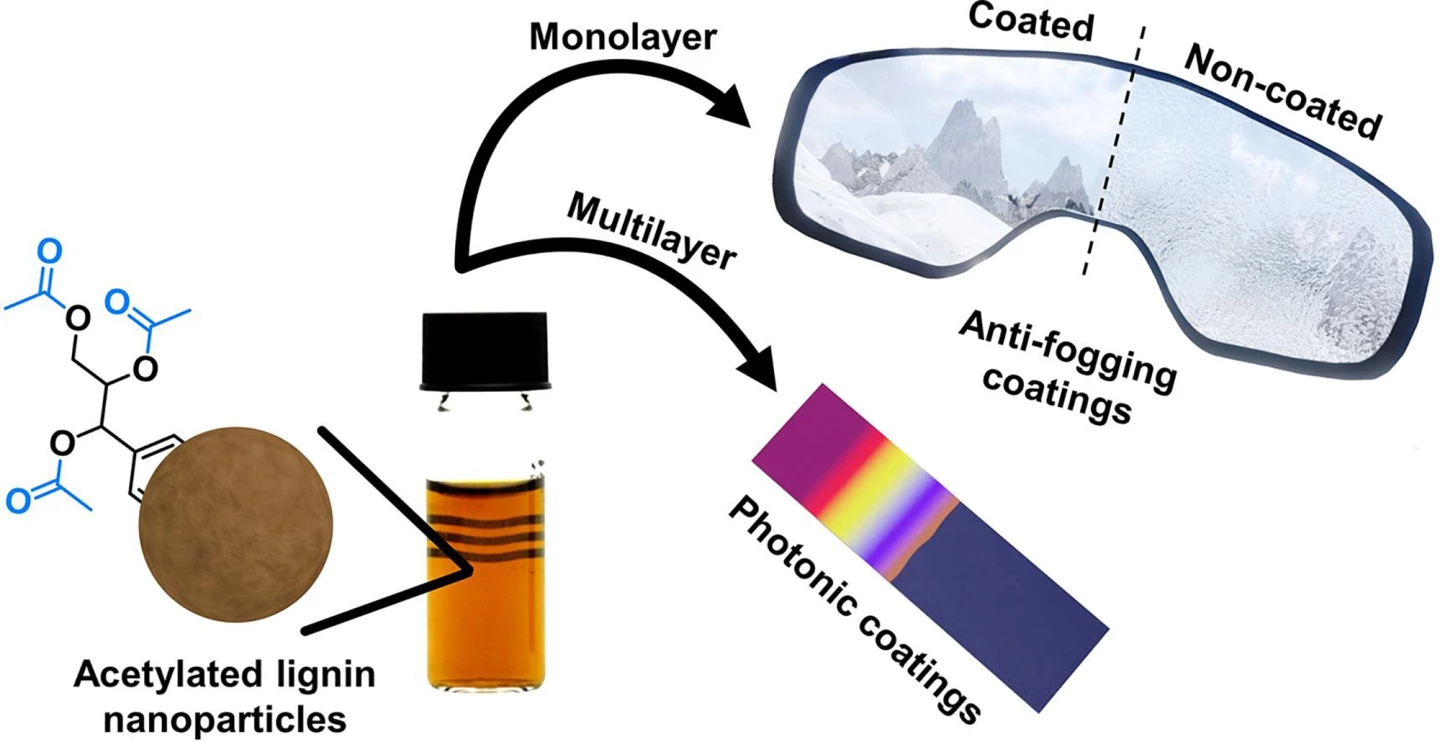Researchers have developed a quick and easy way to turn the wood-based bioproduct lignin into nanoparticles that can create a transparent coating with anti-fog properties or a colorful antireflective surface. The discovery transforms this abundant waste product into a useful material with diverse applications, such as on glasses and vehicle windows.
With the current emphasis on the circular economy and climate change, lignin, the organic substance that binds together cells, fibers and vessels in wood, has been recognized as a promising renewable resource to replace fossil-based materials. But, currently, the byproduct of the pulp and paper industry is underutilized, with about 98% used for combustion heating or power generation.
One of the barriers to using lignin is its complicated molecular structure, which makes it difficult to break down. Now, researchers from Aalto University in Finland have developed a method of turning lignin into a bio-based transparent coating with anti-fogging and antireflective properties.
Lignin nanoparticles (LNPs) are hydrophilic and suited to creating textures, making them perfect for optical applications, especially those requiring anti-fogging properties. However, a problem in achieving this use has been overcoming the particles’ opacity, which requires precise control over film thickness.
In the current study, the researchers looked at decreasing the size of LNPs to overcome the opacity issue since smaller particles are less cloudy and scatter light in a more uniform manner.
“Optical coatings need to be transparent, but so far, even rather thin lignin particle films have been visible,” said Alexander Henn, lead author of the study. “We knew that small particles appear less turbid, so I wanted to see if I could make invisible particle films by pushing the particle size to a minimum.”
To push the particle size down, the researchers chemically modified the lignin via acetylation, an esterification reaction that introduces an acetyl functional group into an organic chemical compound. Using acetic acid to drive the reaction – which took only 10 minutes at a relatively low temperature of 140 °F (60 °C) – the process yielded ultra-small LNPs at high concentrations, with unexpected properties.
“The lignin particles I made from the acetylated lignin had rather surprising properties, which made the rest of this study very interesting,” Henn said. “The possibility to make photonic films, for example, came as a total surprise.”
The small size of the particles enabled the researchers to control layer thickness and appearance, from transparent sub-monolayers to multilayered films, which allowed them to control the color and absorbance of light at different wavelengths.

They found that the ultrathin transparent coatings reduced light scattering caused by water droplets and concluded that acetylated lignins were suitable as an anti-fogging coating for transparent surfaces. And, by applying thicker layers and using multilayer films, the researchers could control the color of the coating, achieving bright hues of yellow, blue, and purple. These thicker layers were also photonic; that is, they reflected light.
The researchers say the speed and ease of the acetylation reaction and its high yield mean that it could be scaled up to industrial levels, with the added benefit of lignin being a carbon sink.
“Lignin-based products could be commercially valuable and simultaneously act as carbon sinks, helping relieve the current fossil fuel dependence and reduce carbon dioxide emissions,” said Monika Österberg, one of the study’s corresponding authors. “High value-applications like this are important to drive lignin valorization and move us away from using lignin only as a fuel.”
The study was published in the Chemical Engineering Journal.
Source: Aalto University via EurekAlert!






